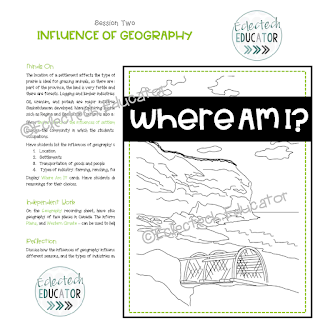From 1867 to 1914, the Canadian West opened for mass settlement, and became home to millions of immigrant settlers seeking a new life. The Prairie Provinces of Manitoba, Saskatchewan, and Alberta grew rapidly in these years as settlers began to transform the barren prairie flatland and establish unique cultural settlements. Many motivations brought immigrants to Canada: greater economic opportunity and improved quality of life, an escape from oppression and persecution, and opportunities and adventures presented to desirable immigrant groups by Canadian immigration agencies.
I have created a zip file to help students build an understanding of Prairie immigration experiences and settlement patterns.
The resource contains:
The resource contains:
- A complete 45 page unit with six lessons
- Six PowerPoints which coordinate with the unit's lessons
- Immigrating to Saskatchewan
- Attracting Newcomers
- Establishing A Homestead
- Farming the Land
- Creating Communities
- Appreciating Cultural Diversity













